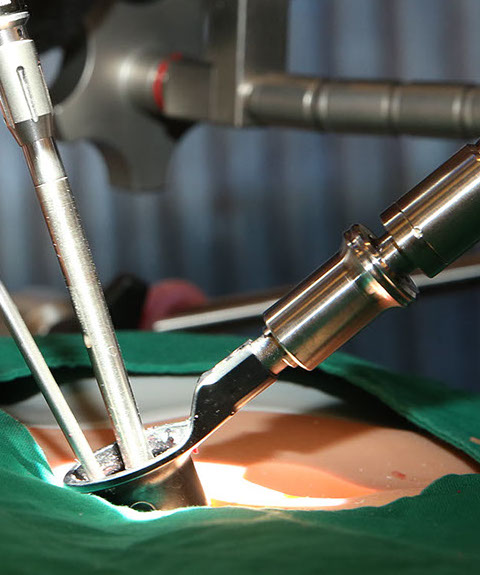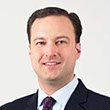feature storY
HIGHLIGHTS
MEET THE AOSPINE MEMBERS

Justin Smith, USA
1. Why did you decide to become a spine surgeon?
Through medical school, graduate school, and much of residency, my interests were in investigating and treating brain tumors. I was fortunate to have several successes in my brain tumor research and to produce several papers on brains tumors that are still frequently cited. As a surgeon, I gradually realized that the future significant advances in the field of brain tumors that would most impact patient care would likely be made in the laboratory at the bench-top, not in the operating room. Given the high level of clinical commitments on surgeon time, the ability to run a competitive basic science laboratory with the hope of leading these significant advances was fairly limited.
At a similar time, I became very interested in spine surgery and the ability to dramatically affect patient quality of life in a relatively short period of time. It also became apparent that many of the significant future advances in spine care would not necessarily be made in the "As a surgeon, I gradually realized that the future significant advances in the field of brain tumors that would most impact patient care would likely be made in the laboratory at the bench-top, not in the operating room."laboratory, but instead would likely be made in the operating room and based on clinical, rather than basic science bench-top, research. The majority of spine procedures performed lack clinical outcomes data to support their use. This, coupled with rapid advancements in techniques, technology, and implants, results in a situation in which spine care is often based on personal and anecdotal experience, rather than evidence-based medicine. Such ambiguity can compromise the ability to establish appropriate use criteria, standards of care, and benchmarks for complications and outcomes, all critical factors in optimizing patient care and achieving cost-effective treatment. Despite the substantial need for clarification of these issues, few investigators were working to address them. I felt that I had found my passion and calling.
2. Where did you get trained?
I started as a chemistry major at Johns Hopkins University and then completed the combined MD-PhD program at the Mayo Clinic in Rochester, Minnesota. This was followed by neurosurgery residency at the University of California San Francisco. I then pursued fellowship training in complex spinal surgery and deformity at the University of Virginia with Dr. Christopher Shaffrey and fellowship training in minimally invasive spine surgery with Dr. Rick Fessler at Northwestern in Chicago.
3. How do you train today/make sure you stay up to date?
I try to keep up with articles in the major spine journals as they are published, although this is always a challenge with more and more information becoming available. I also travel "Even when I am serving as faculty at a course, I find that I learn a lot from the lectures from other faculty and from panel discussions."fairly extensively to research conferences and courses to learn and present. Even when I am serving as faculty at a course, I find that I learn a lot from the lectures from other faculty and from panel discussions. I also enjoy discussing challenging cases with colleagues from all over the world at courses and meetings, both through formal teaching at courses and on the sidelines at research conferences and courses. I find these discussions to be incredibly helpful in continuing to broaden my thinking about treatment decisions and new techniques and approaches.
4. Who inspires/inspired you?
During residency at the University of California San Francisco, Dr. Christopher Ames first inspired me to pursue a career in spine surgery through time spent in the operating room and through multiple research studies. Even more than 10 years later, we continue to collaborate extensively on research studies through the International Spine Study Group.
My senior partner, Dr. Christopher Shaffrey at the University of Virginia, has also been an inspiration for me. He truly excels at all of the primary pillars of academic medicine- teaching, research, and clinical care. He is also a very thoughtful and dedicated leader who works to unite and always manages to leave an organization better than when he took the helm. These are all qualities that inspire me to try to be better.
5. Can you tell a bit in general about spine surgery in your country?
Spine surgery is performed throughout the United States in multiple settings, including "Although in the recent past a large proportion of practicing spine surgeons were in private and independent group practices, there has been a growing trend for spine surgeons to have stronger affiliations with or be formally employed by hospitals and hospital systems."private and public community and regional hospitals, Veterans Administration Medical Centers, charity hospitals, and large tertiary and quaternary medical centers, many of which are academic centers. Although in the recent past a large proportion of practicing spine surgeons were in private and independent group practices, there has been a growing trend for spine surgeons to have stronger affiliations with or be formally employed by hospitals and hospital systems. This transition has likely been spurred by the ever increasing administrative requirements and mandates.
6. How does your typical work day look like?
Most days begin at 6 AM with morning rounds with the residents and fellows. This is generally followed either by surgery or outpatient clinic. Typically I operate 2-3 days a week and have 2 full days of clinic. Depending on the scheduled cases, the day usually ends by early evening but can occasionally stretch later, especially when I am on call for trauma or have other urgent cases. I fit in research and academic time in the evenings, on weekends, and on an occasional dedicated academic day. I typically travel for research meetings, conferences, or courses at least 2 to 3 times per month. The entire mix of practice, teaching, and research is what makes the substantial investment of time worthwhile.
7. What are your most frequent operations?
I enjoy performing a variety of spine procedures, including both cervical and thoracolumbar. As a complex spine surgeon practicing at a major academic center, I tend to get a high proportion of referrals for more complicated cases. Approximately two-thirds of my current procedures are revisions and often patients have had multiple operations before coming to see me. The need for these revisions stems from a variety of reasons, including progression of the degenerative disease process, complications such as pseudarthrosis or junctional failure, and occasionally may be iatrogenic. However, I most enjoy deformity cases, both cervical and thoracolumbar.
8. What are the biggest challenges in your job?
Time is always a factor and juggling clinical care, teaching, and research can at times be challenging.
9. What do you consider the biggest challenges for spine surgeons in your country?
In the United States spine surgery, especially spinal fusion, continues to increase in "In the United States spine surgery, especially spinal fusion, continues to increase in frequency and is very costly to the healthcare system. This combination of growth and cost has drawn focus on spine procedures."frequency and is very costly to the healthcare system. This combination of growth and cost has drawn focus on spine procedures. There are currently pressures on improving the cost effectiveness of spine care, through a variety of means, including downward pressure on reimbursement rates, increased scrutiny of complications, readmissions, and revisions, and in some cases attempts to limit access to care through denial of procedures by payers.
10. Where do you see the biggest opportunities for spine surgeons in your country?
With the aging population in the United States, the prevalence of degenerative deformities is increasing. These can be challenging cases due the severity of the diseases, comorbid conditions, and high complication rates. Caring for this expanding population is a big and growing opportunity.
11. What advice would you give to a young surgeon?
I think the best advice I would give to a young surgeon is to never lose sight of what is most important- the patient. Always try to do what is right for the patient.
12. What does being a member of AOSpine mean to you, how has AOSpine influenced your career?
AOSpine has markedly influenced my career. AOSpine provided funding that helped to support my fellowship training at University of Virginia. Since that time, I have attended AO courses and conferences across the United States and around the world and have had the privilege of serving as faculty for some of these courses and conferences. I have also been involved in multiple AOSpine sponsored research studies.
13. Why would you recommend to become a member of AOSpine?
Becoming a member of AOSpine provides access to a range of resources including educational courses, research and educational support, and a network of surgeons around the world dedicated to spine care.

Justin Smith
Professor of Neurosurgery at the University of Virginia, Charlottesville, VA, USA
Newsletter 15 | March 2018
Newsletter 15 March 2018
feature storY
MEET THE AOSPINE MEMBERS
HIGHLIGHTS